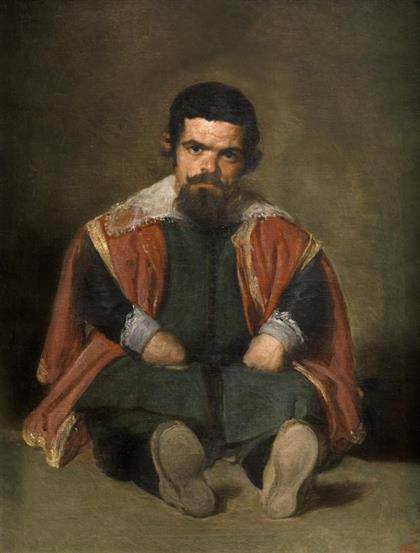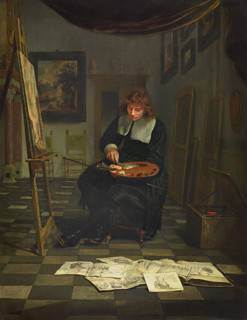
Francis Bacon
Three Studies for a Crucifixion, 1962
Oil on canvas, three panels
198.1 x 144.8 cm, each panel
Solomon R. Guggenheim Museum, New York, 64.1700
© The Estate of Francis Bacon. All rights reserved
DACS/VEGAP, Bilbao, 2016

Diego Velázquez
The Buffoon el Primo, 1644
Oil on canvas
106.5 x 82.5 cm
Museo Nacional del Prado, Madrid
Francis Bacon: From Picasso to Velázquez Guggenheim Museum Bilbao presents ‘Francis Bacon: From Picasso to Velázquez’, an exhibition of almost 80 works by Francis Bacon, alongside the works of the masters who played a huge role in his career. September 30 2016, to January 8, 2017.]]>
Source: Guggenheim Museum Bilbao
Transgressive in both is life and his art , Bacon broke down many barriers that were deeply entrenched at the time, placing human beings in front of a mirror in which we could see ourselves in a raw, violent way.
Francis Bacon was a fervent Francophile. He was an avid consumer of French literature by authors like Racine, Balzac, Baudelaire and Proust and passionate about the art of Picasso and Van Gogh, both of whom lived in France, and the painters who preceded them like Degas, Manet, Gauguin, Seurat and Matisse. Bacon lived in and frequently visited France and the Principality of Monaco. As an adolescent, he discovered Nicolas Poussin’s “Massacre of the Innocents” (1628 –1629) near Chantilly, and in 1927 he had a revelatory encounter with Picasso’s work when he visited the exhibition “Cent dessins par Picasso” in the Paul Rosenberg Gallery in Paris, which, in fact, spurred him to decide to embark on his career as a painter. In 1946 , he left London for Monaco, where he lived for three crucial years in his career, and where he would regularly return until 1990. Bacon always regarded his retrospective at the Grand Palais in Paris in 1971 as the peak of his career, even though it came at one of the most tragic times of his life, just after the death of his partner, and despite the fact that he had held major retrospectives in London and elsewhere. Throughout his career, Francis Bacon continued to develop ever closer ties with Paris, as attested to by the portraits of his Parisian friends and that fact that he kept a studio in Le Marais until 1985
After his initial contact with Picasso’s oeuvre in the 1920’s and 1930’s, Bacon’s influence from Spanish culture is the most obvious in his obsession with the portrait of Pope Innocent X that Velázquez painted in 1650, which would serve as Bacon’s in spiration for more than 50 works. Curiously, Francis Bacon never saw this Velázquez painting, which hangs at the Doria Pamphilj Gallery in Rome, in person; when he had the chance to lay eyes on it during his visit to the Italian capital in 1954 , he preferred instead to retain the reproductions in his memory instead of seeing the original painting. In addition to Velázquez, he was also fascinated by other classic Spanish painters such as Zurbarán, El Greco and Goya, whose paintings he fervently admired at Madrid’s Museo del Prado, a museum he asked to visit alone just a few years before his death after seeing the Velázquez retrospective held there in 1990. Francis Bacon died on a brief visit to Madrid in 1992, and even though he never had a permanent home in Spain, he was known to have made extended sojourns in Málaga and visits to Seville, Utrera and Madrid
Related content
Francis Bacon at Tate Britain (exhibition, 2008-2009)
Follow us on:

